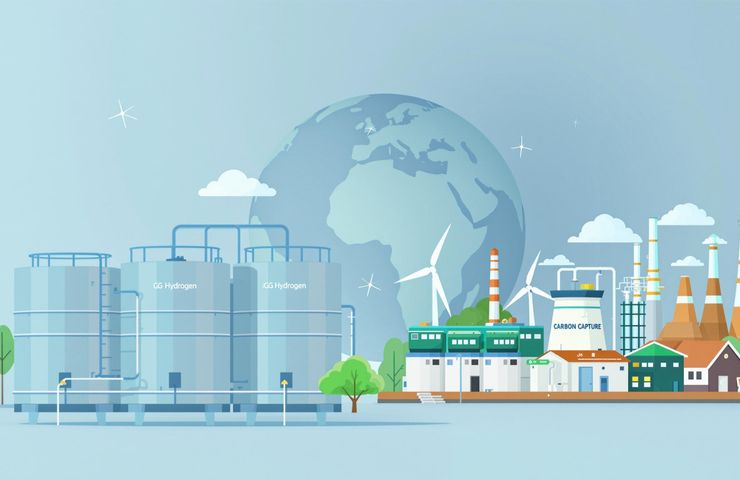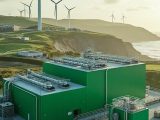
Industrial Gases Market Fuels Global Clean Energy Transition
August 7, 2025You’ve probably noticed chatter about a big uptick in the industrial gases market—analysts are forecasting growth at roughly 6.13% CAGR from 2024 to 2050. These unsung heroes—oxygen, nitrogen, hydrogen, and carbon dioxide—have quietly powered steel mills, chemical plants, and life-saving hospital care since the late 1800s. But today, they’re front and center, fueling everything from medical wards to the low-carbon energy revolution.
Not long ago, these gases did their thing behind the curtain in factories and ERs. Fast forward to 2025, and they’re stealing the show: companies are scrambling to ramp up output, push new clean energy technologies, and face down climate change head-on. From hydrogen energy hubs popping up in Europe to on-site gas generation in Asian hospitals, the pressure’s on. And we’re seeing it unfold in real time as plants start churning out gas and R&D budgets swell. But how did we get here, and what’s around the bend?
What’s Driving the Surge?
- Manufacturing & Industry: You can’t build steel, craft electronics, or run chemical reactors without high-purity oxygen and nitrogen. Modern fabs, especially chip plants, demand ultra-clean gas streams, pushing suppliers toward state-of-the-art separation systems.
- Healthcare Expansion: The pandemic laid bare oxygen shortfalls, leading hospitals worldwide to invest in on-site gas generation units. Medical-grade supply is now a must-have, not a nice-to-have.
- Energy Transition: As countries chase net-zero goals, hydrogen energy is the rising star for clean power and transportation, while carbon capture setups aim to trap CO₂ at the source in heavy industries.
- Food & Beverage: Carbon dioxide chilling and nitrogen flushing keep produce fresh and packaged goods safe. With consumers demanding quality and less waste, food processors rely more than ever on reliable gas solutions.
- Regional Momentum: The Asia-Pacific is surging ahead thanks to China, India, and Japan’s industrial boom. Meanwhile, Europe’s Green Deal and US clean energy incentives are supercharging hydrogen and CCUS investment.
Each of these trends could shift the dial alone, but together they’re fueling a full-blown market explosion.
Key Technologies at the Helm
- Hydrogen Production by Electrolysis: Splitting water with electricity—ideally from renewables—yields zero-emission fuel for power, transport, and industry. Green hydrogen projects in Europe are already hitting multi-gigawatt scales.
- Carbon Capture, Utilization & Storage (CCUS): Whether you snag CO₂ before or after combustion, you can compress and stash it underground or turn it into building materials. It’s critical for cement works and heavy chemical operations aiming for net-zero.
- On-Site Gas Generation: Modular pressure swing adsorption and membrane units let you produce industrial gases right where you need them. That slashes transport emissions and logistics headaches—vital in remote manufacturing sites and hospitals.
- Advanced Gas Separation: Breakthroughs in cryogenic distillation and membrane filtration are driving purity up and costs down. Semiconductor fabs now routinely demand nitrogen at 99.999% purity to avoid any defects in their chips.
“Hydrogen energy is a true game-changer,” says a rep from Air Liquide. Meanwhile, Linde PLC reports that its on-site gas generation installations have slashed customer carbon footprints by up to 30%.
Major Players Stepping Up
- Air Liquide (France): Since 1902, this pioneer has leaned into clean energy technologies, plowing billions into electrolyzers across Europe.
- Linde PLC (Ireland/Germany): Born from Linde AG and Praxair, it’s a front-runner in CCUS rollouts and hydrogen fueling stations across North America.
- BASF SE (Germany): The chemical heavyweight is piloting CCUS at Ludwigshafen, targeting millions of tons of CO₂ cuts each year.
- SOL Group (Italy): A key supplier of medical and industrial gases across Europe, now expanding fast in Eastern markets.
- Air Products and Chemicals Inc. (US): A 1940 pioneer in LNG and large-scale hydrogen deals across the Middle East and Asia.
- Messer Group GmbH (Germany): The largest private specialist, known for carbon-neutral gas supply contracts to steelmakers and food producers.
- Iwatani Corporation (Japan): Leading the charge in Asia with one of the continent’s biggest fuel cell vehicle refueling networks.
- Matheson Tri-Gas Inc. (US): Taiyo Nippon Sanso’s North American arm, supplying specialty blends for industry, electronics, and healthcare.
- Taiyo Nippon Sanso Corporation (Japan): Under Mitsubishi Chemical, it’s a major name in high-purity electronic gases and CO₂ capture tech for food and beverage.
- Elliniki Gases S.A. (Greece): The go-to oxygen and nitrogen supplier across the Balkans, keeping hospitals and factories humming.
Benefits and Collateral Impacts
- Pros:
- Decarbonization: Hydrogen and CCUS projects are chopping greenhouse gas emissions in heavy industries.
- Healthcare security: Local on-site gas generation wards off oxygen shortages during crises.
- Food preservation: Smarter packaging gases cut waste, keep products fresher, and protect public health.
- Challenges:
- Energy hunger: Traditional gas production still guzzles power unless renewables step in.
- Supply chain risks: Moving and storing tons of gas invites logistical headaches and safety concerns.
- Access gaps: Some regions struggle to afford or adopt the latest tech, leaving pockets behind.
Companies and regulators need to team up on greener production methods, infrastructure upgrades, and circular economy practices if we’re going to knock these hurdles down.
Looking Ahead: A Global Outlook
So what’s next? Asia-Pacific should keep skyrocketing, fueled by China’s factories and India’s hospital builds. Europe’s Green Deal will push more green hydrogen projects online, while US incentives drive CCUS and electrolyzer manufacturing.
- Smart tech integration: AI and IoT will fine-tune gas production and distribution in real time.
- New partnerships: Gas suppliers teaming up with solar and wind farms to co-locate electrolyzers.
- Wider on-site gas generation adoption: Especially in emerging markets craving resilience and lower emissions.
Bottom line: the industrial gases market is shifting from a backstage utility to a strategic linchpin for sustainability, healthcare security, and manufacturing excellence. And trust me, this is just the opening act in our clean energy future.



 With over 15 years of reporting hydrogen news, we are your premier source for the latest updates and insights in hydrogen and renewable energy.
With over 15 years of reporting hydrogen news, we are your premier source for the latest updates and insights in hydrogen and renewable energy.